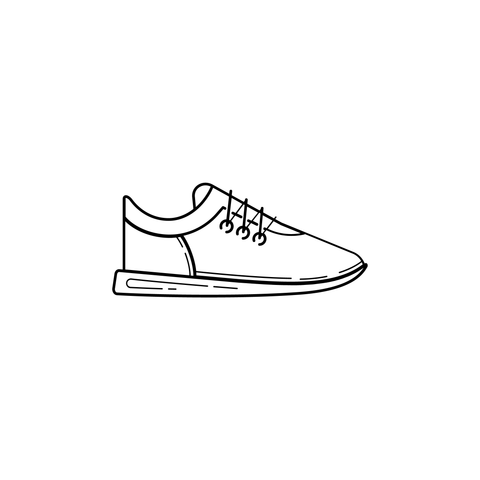FAQ Menstrual cup
How does a menstrual cup work?
The menstrual cup Femi.Eko® is a feminine intimate product made from medical silicone – Wacker German Medical Silicone . The cup is inserted into the vagina and collects the menstrual blood. If used correctly, the cup is the most effective product to protect against any blood flow, without interfering with your daily activities.
Can I use a menstrual cup if I have endometriosis or a retroverted uterus?
Yes, you can, and it is even a better solution for your condition, as you should use chemical-free products and let your menstrual flow happen naturally. This is why many doctors do not recommend tampons for endometriosis. See our blog.
Can I use the Femieko menstrual cup if I am allergic to silicone?
The menstrual cup is inserted into the vagina and collects the menstrual blood. It is placed in the vaginal opening and creates a vacuum which protects against blood leaks. If used correctly, the cup is the most effective product to protect against any blood flow without it being noticeable inside or interfering with your daily activities.
How does a menstrual cup work?
The menstrual cup is inserted into the vagina and collects the menstrual blood. It is placed in the vaginal opening and creates a vacuum which protects against blood leaks. If used correctly, the cup is the most effective product to protect against any blood flow without it being noticeable inside or interfering with your daily activities.
Why should you use a menstrual cup?
The menstrual cup is not only comfortable, but it is also safe for health and more practical for your monthly care. It will help you save money and live a stress-free life, removing the constant shame and discomfort that women usually feel every month when using unreliable menstrual products.
The menstrual cup gives you the freedom to swim, cycle and even sleep without having to worry about dirty sheets or leakage.
In addition, it can be used for up to 5 years and can be worn safely for up to 12 hours without the risk of bacteria or smell.
Does a menstrual cup protect 100% against leakage?
A menstrual cup is the safest way to protect against leakage. To enjoy the benefits of the menstrual cup, you must choose the right size and insert the cup correctly.
You should empty the cup at least every 10 to 12 hours, depending on how much you bleed, to avoid leakage.
It may take a few tries to insert and remove the cup correctly, but once done, you can enjoy 100% protection.
How do I choose a menstrual cup?
The most important thing is to choose the right size.
Femi.Eko® Menstrual cups have an anatomical shape and they are made of soft medical silicone. See here how to choose the best fit:
Size A / S – for women under 30, with low to heavy periods.
Size B / M – for women over 30 who have given birth and have heavy periods.
Size TEEN – for teenagers, girls with their 1st period, girls who have not been sexually active yet.
Our cups are designed to fit all types of cervix and have a long tail that can be adjusted by cutting it to the length that is comfortable for you.
If you choose the right cup size, you will not feel discomfort and you will not have any leakage.
How much blood can a menstrual cup hold?
How to start using a menstrual cup?
First of all congratulations for thinking of it :). We know it takes a leap of faith to change old habits, but it's the best decision for a more sustainable period.
Don't be put off by what you may have already read. Getting started can be easier than expected.
The best place to start is to read our manual (which comes with your product in the box). Give it at least 3 months to try the cup to get the perfect experience. And yes, we said PERFECT, because you'll be totally amazed at how much you've struggled in your life until you found this stress-free way to manage your period.
If you're still having trouble finding the right size for you, or if you want to see if the menstrual cup is the product you need, take our test and see for yourself.
If you have problems such as urinary tract infections (UTI), an intrauterine device/coil inserted, anatomical peculiarities such as uterine retroversion or scars after childbirth, we recommend talking to your doctor first and see if it is better to buy the Femi.Eko menstrual disc instead for a menstrual cup
Can I use a menstrual cup if I'm a virgin?
You can use a menstrual cup if you are a virgin, as it will not damage your hymen if you insert it correctly. The Femi.Eko® menstrual cup for teenagers is specially developed for the special anatomy of young girls.
We only recommend cup size TEEN as it is a friendly product for 1st periods, virgins and teenagers.
If you are a teenager over 18, or if you have started your sexual life, you can use the menstrual cup in size A/S
How do I insert a menstrual cup?
STEP 1: Hygiene is important whenever we talk about our private parts. So wash your hands thoroughly before using the menstrual cup.
STEP 2: Fold your disinfected Femi.Eko® Menstrual Cup into a C-shape to make it easier to insert. If this is your first time using a menstrual cup, it will help you to breathe and remember that it is normal to try a few times before you get the cup in the right position.
STEP 3: Hold the cup in a C shape and sit in a position where you can easily access the vaginal opening. You can lift one leg or stand with one leg on the toilet seat. What works best for you is perfect!
STEP 4: Open your vagina with one hand and then insert the menstrual cup (still folded, remember?) into your vagina as far as you can go and it feels comfortable for you. Don't be upset if it doesn't work The first time. You didn't learn to ride a bike right away, did you? Just relax and try again, trust us!
STEP 5: Twist the menstrual cup inside your vagina to make sure it opens completely and forms a seal inside. This is important as it will ensure that no leaks occur for up to 12 hours.
When your cycle is over, just wash the menstrual cup, disinfect it and put it in your Femi.Eko® special bag that you received in the original package.
How do I take out a menstrual cup?
You can remove the menstrual cup by inserting a finger along the side to loosen the suction or by gently squeezing the stem (at the bottom of the cup).
Do not pull it without breaking the vacuum seal with your finger! All you have to do is push the menstrual cup out with your pelvic floor muscles and press on its bottom with your finger to break the seal, then grasp both sides of the menstrual cup with a finger and remove it in a rotating motion. You will not feel any discomfort or pain if everything is done correctly.
Removing the menstrual cup can be easy, and gets easier with the experience of a few times. Give it time and don't stress
What if I can't get my menstrual cup out?
If you can't get the menstrual cup out, sit down and squeeze with your pelvic muscles (as if you were having a bowel movement) and try to get it out again using your fingers.
Don't worry, the cup isn't going anywhere, it's still in the vagina and it will come out! Just relax completely, take a few deep breaths and quietly try again.
Be patient and don't be brutal. You must not introduce harmful items
How long can I use a menstrual cup?
You can use your menstrual cup for up to 12 hours, and the recommendation is to empty it twice a day or every 10 to 12 hours. If you have heavy bleeding, you should empty it more often as this will help you avoid leaks.
How to clean and sterilize the menstrual cup?
You should always clean the Femi.Eko® Menstrual Cup after each use. Sterilize it after each cycle by boiling it in water for 5 minutes, or use our Femi.Eko® sterilizer which you will find under accessories If you do not have a sterilizer, you can clean the menstrual cup with water and natural soap, remember to rinse it thoroughly of. The hardened blood pieces can be removed carefully with a soft brush. If the blood is stuck in the holes of the cup, you can fill your Femi.Eko® Menstrual Cup with water, place it between your palms and just squeeze the cup together so that the water is flushed out through the holes.
Before using the menstrual cup for the first time, or between periods, it may be a good idea to sterilize it. Put water in a pot and bring it to a boil, then place your Femi.Eko® Menstrual cup in the bubbling water for up to 10 minutes the first time, and only 5 minutes between periods. If you have a sterilizer available, use it. Don't worry: the menstrual cup does not change its properties when it is boiled, but make sure that the water used does not contain too much calcium to avoid calcium deposits.
Do not use harmful chemicals to clean the menstrual cup, such as tea tree oil, castilla soap, antibacterial soap, common hand sanitizers, and other home remedies, and do not put it in the dishwasher, as this may damage the silicone and cause infections
How to clean a menstrual cup in a public toilet?
Sometimes you may need to empty your menstrual cup in a public toilet. Don't worry about that! Just follow this routine: Wash your hands thoroughly, remove the cup, pour the blood into the toilet, rinse the menstrual cup thoroughly with water (you can take a water bottle with you to the toilet), reinsert the cup, then wash your hands.
We know that many of the public toilets do not have a faucet near the toilet, so a bottle of water can solve this problem.
Is it normal for a menstrual cup to leak?
The Femi.Eko® menstrual cup is anatomically designed to prevent leakage if inserted and used correctly. But there may be some exceptions, for example: –
– if the menstrual cup is too small
– if a menstrual cup is not inserted correctly
– if your bleeding is too heavy
– if it is not emptied as often as necessary.
Be aware that the menstrual cup can sometimes shift due to bowel or cervical movements, resulting in leakage.
If you cannot match a cup, we recommend that you try the Femi.Eko® Menstrual Disc , as it is easy to use and wear from the first try.
Can I use a menstrual cup while doing sports?
The menstrual cup is suitable for protecting you during exercise and will give you the freedom to enjoy any sporting activity. When inserted correctly, the cup prevents leaks and discomfort. You can dance, take a yoga class, cycle, run or jump as you like, the menstrual cup will protect you.
If you want to be even more sure of avoiding leakage, you can try Femi.Eko® reusable pads or menstrual panties in combination with the cup.
Can menstrual cramps get worse when using a menstrual cup?
The menstrual cup has nothing to do with your period pain or cramping, and in fact many women experience less cramping when using menstrual cups and reusable menstrual products, as they are less harmful to the natural bleeding and do not contain bleaching composites like tampons and sanitary napkins often do.
The natural blood flow is not stopped when using a menstrual cup , and the cup does not absorb the blood. It also does not prevent the natural discharge which, when it occurs, can disrupt the natural menstrual process.
If you suffer from menstrual cramps or if they get worse, make an appointment with your doctor to find out the cause.
Can a menstrual cup be used together with an IUD?
It is not recommended to use a menstrual cup when you have had an IUD.
There is a risk that the string of the IUD may move when the cup is put on or taken out, and therefore we recommend that you talk to your doctor if you really want to use a menstrual cup to protect you while you are menstruating.
The doctor will also decide if it is necessary to shorten the cord attached to the IUD so that you do not pull it out when you remove your menstrual cup.
If you use an IUD, we recommend that you use products such as Femi.Eko® menstrual pads or menstrual panties during your period.
Is it normal to have pain when using a menstrual cup?
The Femi.Eko® menstrual cup is specially developed to be comfortable, made of very soft medical silicone and with an anatomical shape. You should not feel any kind of pain when using a menstrual cup. The only time you may feel a little discomfort is when you insert the cup for the first time.
In any case, you must be careful not to insert the cup too deeply, although it should be deep enough to avoid leaks. You'll just know what's right for you after a few uses.
Can menstrual cups cause infections?
Like all menstrual products, the menstrual cup, if not used correctly, can cause infections.
But remember that menstrual cups are a safer way to get through the menstrual days than tampons or pads, as the cup is airtight and thus prevents bacteria from forming.
Always wash your hands with soap or use a disinfectant before and after inserting and removing the menstrual cup.
Empty the cup at least every 10 to 12 hours to minimize the risk of infections.
You don't need to lubricate the menstrual cup to insert it, but if you do, make sure you use a safe lubricant. Do not use harmful chemicals to clean the cup, such as vinegar, tea tree oil, castilla soap, antibacterial soap, common hand sanitizers, hydrogen peroxide and other home remedies, and do not put it in the dishwasher, as this may damage the silicone and cause infections.
Wash the cup with clean water or boil it for 5-10 minutes after your period is over and sterilize it again before using it for the next period.
Store the menstrual cup in the cotton bag you received in the package.
Can I have sex while using the menstrual cup?
No, remove the cup before having sex. It is not safe to wear it during sex, as its tail can damage your vagina and disturb your partner. Try using the Femi.Eko® menstrual disc instead, as it is suitable for practicing sex during menstruation without bleeding and without you being able to feel that it is there.
Can the menstrual cup protect against pregnancy or sexually transmitted diseases?
Remove the Femi.Eko® cup before having sex (and remember that the Femi.Eko® Menstrual Cup does not protect you from pregnancy or sexually transmitted diseases).
When should I replace my cup?
We encourage you to replace the Femi.Eko® Menstrual Cup at least every two years, although you can use it for up to 5 years.
We also recommend that you replace your Femi.Eko® Menstrual Cup if:
– you have had a fungal or bacterial infection and you used the cup while you had it.
– if you have dropped the menstrual cup in the toilet.
– if you notice a sticky or powdery film on top of the cup or if the cup is damaged and has cracks.
When should I get advice from my doctor about menstrual cups?
You should discuss using the cup with your doctor if:
– you use an intrauterine device for contraception (sometimes it is necessary to shorten the string attached to the device so that you do not pull it out when you remove your menstrual cup)
– you have had TSS
– you have recently undergone a gynecological operation, given birth or had a miscarriage
– you have a vaginal infection
– you have never had intercourse and you are worried about preserving your hymen
- if you have increasing cramps, blood between periods or any kind of pain.
Can I use a menstrual cup while swimming?
YEESSSS. The best option from swimming, running and living life to the fullest without ever feeling like you're on your period. Period.



